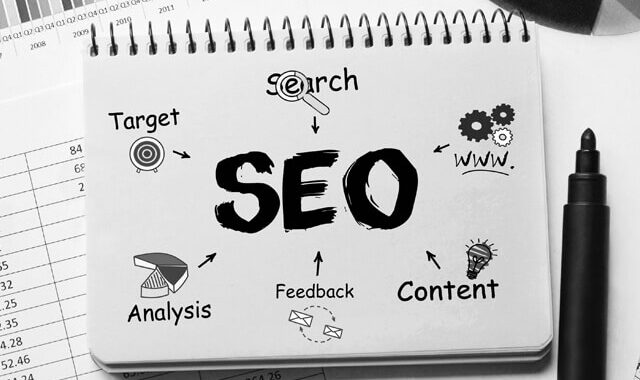The Role of Automation in Email Marketing

In today’s fast-paced digital landscape, email marketing remains one of the most powerful tools for engaging with customers and driving business growth. Yet, the true potential of email marketing is often unlocked through automation. This approach not only enhances efficiency but also personalizes user experiences in ways that manual methods simply cannot achieve. In this post, we’ll explore the pivotal role of automation in email marketing, highlight some of the top tools available, and outline best practices to help you leverage automation effectively.
Understanding Email Marketing Automation
Email marketing automation refers to the use of software to send personalized and timely emails to subscribers based on predefined triggers and rules. Instead of manually crafting and sending individual emails, automation allows marketers to set up workflows that handle this process automatically.
The primary benefits of email marketing automation include:
- Efficiency: Automate routine tasks, saving time and reducing the risk of errors.
- Personalization: Deliver targeted content based on user behavior and preferences.
- Consistency: Maintain regular communication with subscribers without manual effort.
- Scalability: Manage large email lists and complex campaigns with ease.
Key Automation Tools for Email Marketing
Several tools stand out in the realm of email marketing automation, each offering unique features to streamline processes and enhance campaign effectiveness. Here are some of the top tools and what they bring to the table:
- Mailchimp: Known for its user-friendly interface and extensive template library, Mailchimp is ideal for businesses of all sizes. Its automation features include welcome emails, abandoned cart reminders, and re-engagement campaigns. Mailchimp also offers advanced analytics to track campaign performance.
- HubSpot: HubSpot provides a comprehensive marketing platform that integrates email automation with CRM functionalities. This tool excels in creating personalized workflows, managing lead nurturing, and segmenting audiences based on detailed criteria. HubSpot’s analytics also provide deep insights into email engagement and ROI.
- ActiveCampaign: Renowned for its powerful automation capabilities, ActiveCampaign offers advanced segmentation, personalized content, and multi-channel marketing. Its automation builder allows for complex workflows, including sales automation and customer lifecycle management.
- GetResponse: With its focus on user-friendly automation and innovative features like landing pages and webinar integration, GetResponse caters to both beginners and advanced users. It includes tools for segmentation, behavioral triggers, and automated responses.
- Sendinblue: Sendinblue stands out with its all-in-one marketing solution that combines email marketing with SMS campaigns. Its automation features include workflow creation, transactional emails, and real-time analytics. If you are interested in learning more about Business to Business email, check out their page to learn more.

Best Practices for Effective Email Marketing Automation
To maximize the benefits of email marketing automation, it’s crucial to adhere to best practices that ensure your campaigns are both effective and engaging. Here are some key strategies:
- Segment Your Audience: Effective automation hinges on understanding your audience. Segment your email list based on demographics, past behavior, purchase history, and engagement levels. This allows you to send targeted messages that resonate with each segment’s specific interests and needs.
- Personalize Content: Leverage the data you have on your subscribers to personalize email content. Use dynamic fields to include the recipient’s name, location, or previous purchase details. Personalized emails are more likely to capture attention and drive action.
- Create Triggered Workflows: Set up automated workflows that are triggered by specific actions, such as a subscriber signing up for a newsletter, abandoning a shopping cart, or making a purchase. These triggers should lead to relevant and timely follow-up emails that encourage further engagement.
- Test and Optimize: Regularly test different elements of your automated emails, including subject lines, content, and call-to-actions. A/B testing can help you identify what resonates best with your audience. Use analytics to track open rates, click-through rates, and conversions, and continuously refine your strategies based on this data.
- Ensure Mobile Compatibility: With a significant portion of emails being opened on mobile devices, it’s essential to ensure that your automated emails are mobile-friendly. Optimize your design for different screen sizes and test how your emails look on various devices.
- Maintain List Hygiene: Regularly clean your email list to remove inactive or invalid addresses. This helps maintain high deliverability rates and ensures that your automation efforts reach engaged and interested recipients.
- Comply with Regulations: Adhere to email marketing regulations such as GDPR and CAN-SPAM. Ensure that your automated emails include clear unsubscribe options and respect user preferences. Compliance not only avoids legal issues but also builds trust with your audience.
- Monitor Engagement Metrics: Pay close attention to engagement metrics such as open rates, click-through rates, and conversion rates. These insights help you understand how well your automation is performing and where adjustments might be needed.
Conclusion
Email marketing automation has transformed how businesses engage with their audiences, offering unparalleled efficiency and personalization. By leveraging tools like Mailchimp, HubSpot, ActiveCampaign, GetResponse, and Sendinblue, and following best practices such as audience segmentation, content personalization, and workflow optimization, you can harness the full potential of automation.
Embracing these strategies will not only streamline your email marketing efforts but also enhance your ability to connect with customers in a meaningful way. As you continue to explore and implement automation, you’ll find that it can lead to more effective campaigns, higher engagement rates, and ultimately, greater business success.


 How to Create a Successful Financial Freedom Plan
How to Create a Successful Financial Freedom Plan  How to Use Social Media for Brand Building
How to Use Social Media for Brand Building  SEO Tools vs. Manual Optimization
SEO Tools vs. Manual Optimization  How Interest Rates Affect Home Prices
How Interest Rates Affect Home Prices  Pets Analysis Online Ecommerce Store
Pets Analysis Online Ecommerce Store  Medical Alert System Costs
Medical Alert System Costs